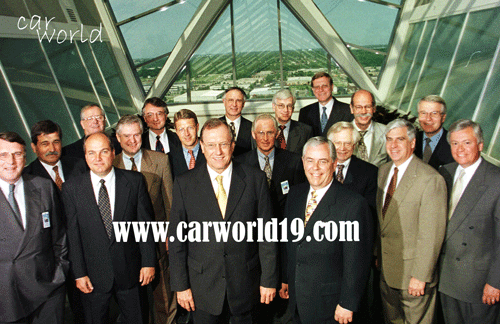One of the biggest mergers in history nearly imploded soon after the settlement became signed.
Daimler-Benz and Chrysler were touted as a "merger of equals" with the aid of a few, while others insisted that it became nothing more than an outright acquisition of Chrysler with the aid of the German automaker.
 |
| DaimlerChrysler: acquisition, mother of merger? |
DaimlerChrysler: acquisition, mother of merger?
It sincerely hasn't constantly been a pretty dating, but things have certainly stepped forward seven years into the marriage.
The meeting of auto manufacturers and their positives
Daimler-Benz and Chrysler Corporation were married in 1998. Within the corporate sector, the newly formed DaimlerChrysler [DCX] behemoth was hailed as a merger of equals, with both corporations maintaining their distinct and amazing identities.
The honeymoon period abruptly ended following the merger, and the rivalry began.
- Deep divides resulted from diametrically opposed managerial and cultural issues, which nearly derailed the new dating.
- Things are much better now than they were in 1998; yet, it remains to be seen if the long-standing relationship between German and American manufacturers will outlast the profound, mutual hostility that existed for so long.
During the latter decade of the twentieth century, a changing international vehicle industry foreshadowed the death of small, independent automakers. Despite its size, the Chrysler Corporation, which nearly went out of business in the early 1980s, became another company on the verge of a crisis:
- A rapidly changing market meant that massive sums of money would be required to keep their product line current, as well as to take their product to new and lucrative markets.
- Unlike in the early 1980s, when the US federal government stepped in with much-desired coins, this time no official suitor was expected. For Chrysler, the long-term plan strongly recommended that the company be bought in order for it to survive. Daimler-Benz walked in.
Initially, the merger was regarded as the transaction of the century
The mixed automakers, which are nearly the same size, have quickly risen to become the world's fifth-largest carmaker.
Many predicted that the brand-new corporation would quickly take a greater chunk of the worldwide marketplace by combining German engineering – Mercedes being the main business – and North American advertising – the Jeep line and Chrysler minivans being the largest draws – Unfortunately, the dream was almost dashed for the following reasons:
An American president of the Chrysler Group, Jim Holden, changed into replaced with the aid of a German appointee, Dieter Zetsche. This alternate happened as Chrysler was experiencing trouble in the market; extra senior American employees had additionally left and were replaced by way of German executives too. Some felt that the Germans have been imposing their will on the Americans.
Billionaire shareholder Kirk Kerkorian who owned 36 million stocks of Chrysler before the merger and now held a good-sized number of stocks of DCX stock, filed healthy in 2000 alleging that certain Daimler-Benz officials have committed “fraud and deceit” in orchestrating the merger.
The ultimate out of the Plymouth brand is adding gasoline to the flames. Already distrustful of German motives and well aware that the "union of equals" morphed into a purchase of Chrysler via Daimler-Benz, the discontinuation of the Plymouth brand heightened suspicions that the Chrysler Group would vanish into history.
Fortunately, time has alleviated some tensions, and the Chrysler Group [defined as the portion of DaimlerChrysler that was once the Chrysler Corporation] has reaped various benefits from the merger, including:
New Mercedes merchandise has been stimulated. The Chrysler Crossfire was the first of several new Mercedes-inspired products to make its way into the Chrysler Group. Made in Germany, the Crossfire is essentially a rebadged Mercedes roadster, a version that the top of the line Chrysler department never had.
Fresh blood for Jeep. An all-new 7 passenger Commanders has hit the streets and further products are being planned.
Mercedes is likely to have survived without a merger, whereas Chrysler is unlikely. Overcoming significant cultural differences – German authoritarianism vs American innovation – has kept the company going. Some credit Zetsche's understanding of the American agency and tradition with reducing tensions, allowing the agencies to gain from their similarities rather than their differences.
Certainly, the animosity that existed only a few years ago appears to have subsided. It is critical for DCX to continue to exist and foster mutual acceptance of German and American cultural differences and commercial company methods. Without them, fresh rivalries will erupt, suffocating what many consider to be a delicate business relationship.
